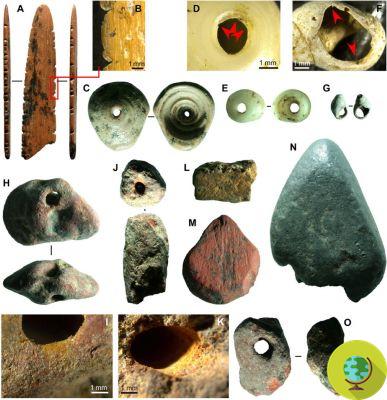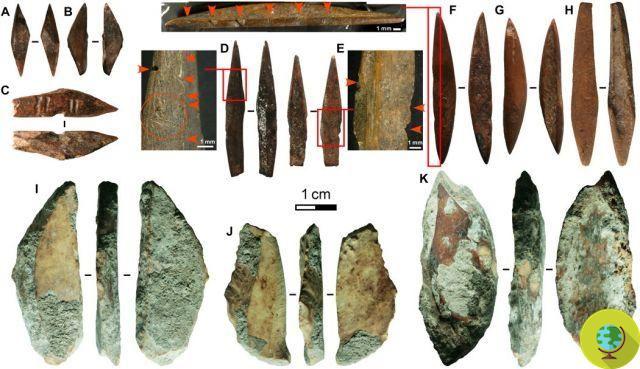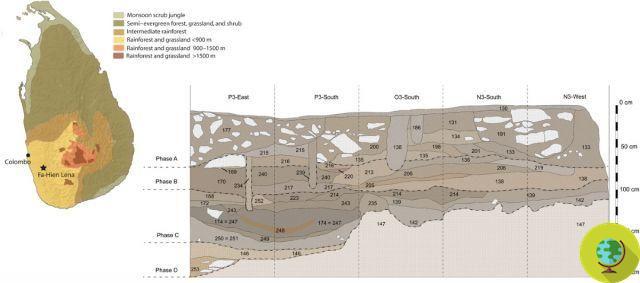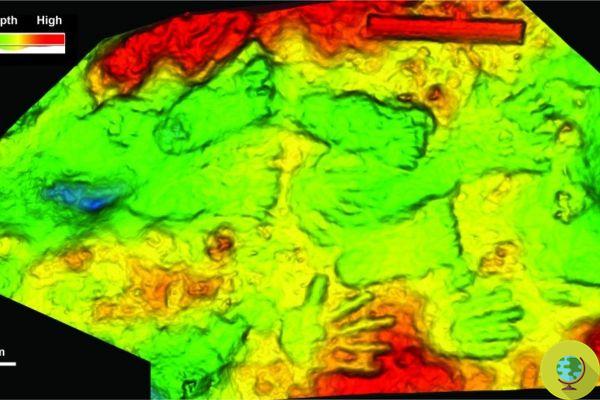Man soon adapted to live in rainforests as well: this is demonstrated by some ancient instruments such as bows and arrows found in Sri Lanka
He is about to end up run over, his mother saves himMan adapted very quickly to live in rainforests as well: this is demonstrated by the discovery of some ancient instruments such as bows and arrows at the site of Fa-Hien Lena, in Sri Lanka. They are between 48.000 and 45.000 years old and are the earliest example of Eurasian bullet technology.
The exceptional discovery comes thanks to an international team of researchers from the Max Planck Institute for the Science of Human History (Germany) and Griffith University (Australia), who worked in collaboration with the Government of Sri Lanka.
The origins of human technology have almost always been sought in the flat areas, on the coasts of Africa or in the temperate environments of Europe. Asia's tropical rainforests, certainly more extreme environments, have been largely overlooked by research, despite their profound history of human occupation.
And where there is man there is technological development (as well as, unfortunately, often devastation): a new study provides the first evidence of the use of the bow and arrow, and perhaps even of primitive textile production, outside Africa, in the tropics of Sri Lanka, datable between 48.000 and 45.000 years ago.
Sri Lanka is an island in South Asia, just below India in the Indian Ocean, and hosts the fossils of Homo sapiens, also preserving clear evidence of human occupation. The discovery opens the door to unexpected knowledge about our species, refuting the idea that these presumably resource-poor environments represented a barrier to the migration of Pleistocene humans.
Precisely how our ancestors obtained rainforest resources, including food sources, remains a mystery, but evidence that they somehow made it now prompts experts to look for clues in this direction as well.
Just a few days ago the National Geographic Society published the map showing where man has made his power felt most overwhelmingly and among these there is certainly no shortage of areas where bows and arrows are now found. Indeed, it was unthinkable that a massive "invasion" was recently dated, although man, unfortunately, is capable of devastating even in a short time.
The map that shows us where man has not (yet) arrived
Dating back to 48.000 years ago, the tools can be traced back to a primitive projectile technique previous to the first similar found in Europe. And the researchers are sure: Preserved bone arrowheads show probable use for hunting for typical rainforest prey difficult to catch.

©Science Advances

©Science Advances
"Fa-Hien Lena has emerged as one of the most important archaeological sites in South Asia since the 80s - explains Oshan Wedage, co-author of the study - conserving remains of our species, its tools and its prey in a tropical context" .
Some of the main finds at the site include extraordinary single- and double-bone tools that scientists suspected were used in the exploitation of tropical resources. Direct evidence was lacking, however, in the absence of detailed high-powered microscopic analyzes.
Proof that it has now been produced by applying state-of-the-art methods.

©Science Advances
“The fractures on the points indicate damage caused by a strong impact - explains Michelle Langley, first author of the work - something that is usually seen in the use of bow and arrow hunting of animals. This evidence predates similar discoveries in Southeast Asia 32.000 years ago and is currently the first clear evidence of the use of the bow and arrow beyond the African continent".
As often happens, not just knowledge as an end in itself: scientists believe that other tools found could have been used to making nets or clothes in tropical environments, dramatically altering traditional beliefs that certain human innovations are linked to specific environmental requirements.
The new study highlights that specific technological, symbolic or cultural developments cannot be linked to a single region or environment. In other words the man had the ability to colonize practically the entire planet sooner than previously thought.
With consequences, however, not always positive.
The work was published in Science Advances.
Sources of reference: Max Planck Institute / Science Advances
Read also:
- The first humans lived in the Philippines thousands of years earlier than assumed
- Fossil of this ancient marine creature found in the resin of a tree

























